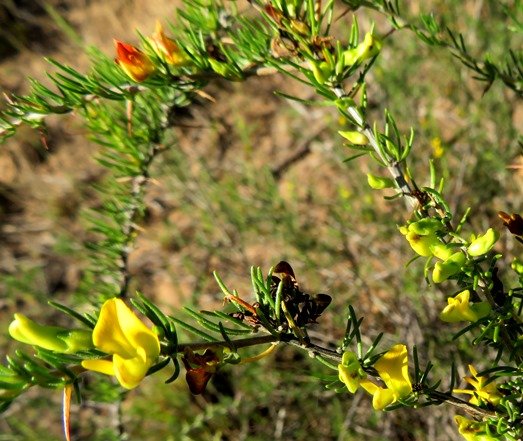Aspalathus spinosa subsp. spinosa flowering branches

Aspalathus spinosa subsp. spinosa earned its common name of dancing thorn or dansdoring in Afrikaans, from the sparse frame of its rigid main branches that allows wind through freely. Sharp spines are sufficiently distributed on all branches to command respect from all not excessively thick-skinned.
The wind therefore also moves these spines with the branches through repetitive aerial arcs, augmented in strong wind to vicious short distance beatings of all in their way. This quickly convinces most that seek shelter here to keep their distance and select a more compact shrub without thorns, or with more stable, better-behaved ones.
The big branches don’t end in spines, but acquire them as decommissioned lateral branchlets, stationed solitary at nodes.
The petals in picture change colour from yellowish green to lemon yellow and yellow proper in the build-up, orange or orange red and sometimes red purple in the decline. The floral cycle concludes when brown discolouring heralds imminent departure.
The prettiest floral parts are neither the most durable, nor the most vital ones (Curtis-Scott, et al, 2020; Vlok and Schutte-Vlok, 2015; Pooley, 1998; Bond and Goldblatt, 1984; iNaturalist; http://www.worldfloraonline.org).

